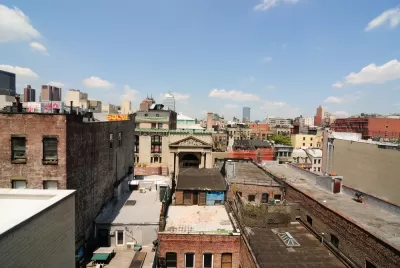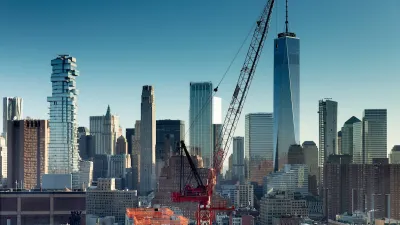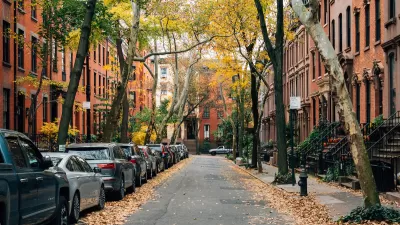A new exhibit at the New York Museum of Modern Art examines the growing pains of urbanism's ascendance.

The new exhibit, opening on November 22 at the Museum of Modern Art, focuses the problems and potential solutions for six different cities around the world: New York City, Mumbai, Hong Kong, Lagos, Rio de Janeiro, and Istanbul. For the exhibit, curator Pedro Gadanho assigned two architectural firms to each city, and required them to present an issue and examine a respective solution.
As Brad Dale of Next City writes: "Two of the cities’ presentations, Mumbai and New York City, exhibited notable parallels, with the solutions grappling with everything from a lack of space to legal issues. In New York, SITU Studio and Cohabitation Strategies investigated the housing crisis in New York City. SITU focused in particular on the invisible New York. New York has a reputation for high-priced real estate, and anyone who’s ever visited likely has wondered, where does the guy who’s selling me pizza live?"
To answer this question, Bradley Samuels of SITU looked into illegal conversions of homes, specifically through 311 calls regarding illegal cohabitation. As Dale writes, "SITU looked beyond the numbers with qualitative work by going with trusted community organizations to see life inside these conversions. About a third of the New York section of “Uneven Growth” is devoted to photographs and diagrams showing ideas for fitting two or three families into a space built for one."
The solution for New York City's conversions? The expansion of "how transferrable development rights can be traded so that low-density neighborhoods could sell air rights one neighborhood over. As the revenue from those sales is converted into additional amenities, and spaces are added to roofs and backyards with modular and DIY structures, SITU sees a public byway extending above and behind homes as well."
FULL STORY: Architecture Ideas for Coping With the Urban Boom in 6 Cities

Alabama: Trump Terminates Settlements for Black Communities Harmed By Raw Sewage
Trump deemed the landmark civil rights agreement “illegal DEI and environmental justice policy.”

Planetizen Federal Action Tracker
A weekly monitor of how Trump’s orders and actions are impacting planners and planning in America.

The 120 Year Old Tiny Home Villages That Sheltered San Francisco’s Earthquake Refugees
More than a century ago, San Francisco mobilized to house thousands of residents displaced by the 1906 earthquake. Could their strategy offer a model for the present?

Ken Jennings Launches Transit Web Series
The Jeopardy champ wants you to ride public transit.

BLM To Rescind Public Lands Rule
The change will downgrade conservation, once again putting federal land at risk for mining and other extractive uses.

Indy Neighborhood Group Builds Temporary Multi-Use Path
Community members, aided in part by funding from the city, repurposed a vehicle lane to create a protected bike and pedestrian path for the summer season.
Urban Design for Planners 1: Software Tools
This six-course series explores essential urban design concepts using open source software and equips planners with the tools they need to participate fully in the urban design process.
Planning for Universal Design
Learn the tools for implementing Universal Design in planning regulations.
Clanton & Associates, Inc.
Jessamine County Fiscal Court
Institute for Housing and Urban Development Studies (IHS)
City of Grandview
Harvard GSD Executive Education
Toledo-Lucas County Plan Commissions
Salt Lake City
NYU Wagner Graduate School of Public Service





























